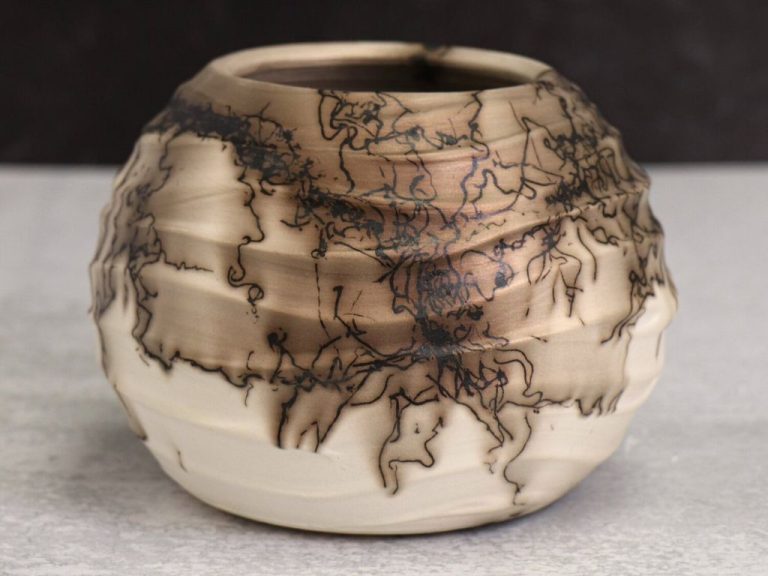What Is The Famous Pottery Town In North Carolina?
Introducing the Famous Pottery Town in North Carolina
There are several towns across the United States that are renowned for their pottery-making tradition and craft. Some of the most well-known pottery towns include Berea, Kentucky; Hamilton, Alabama; and Edgefield County, South Carolina. Each town has its own storied history and unique pottery style that attracts collectors and enthusiasts from around the country.
One of the most famous pottery towns in the United States is located in North Carolina – the community of Seagrove. With over 100 working potteries, Seagrove earns its nickname as the “Pottery Capital of the US.” The pottery traditions of Seagrove stretch back to the 18th century, and generations of potters have helped develop distinct pottery styles that make Seagrove internationally renowned.
Seagrove offers visitors an opportunity to experience Southern folk pottery firsthand by touring pottery studios and shops, interacting with artists, and learning about production techniques. Each year, thousands visit Seagrove to purchase and collect signature North Carolina pottery, contributing to the town’s continuing status as a top destination for American-made pottery.
History of Pottery in Seagrove, NC
The history of pottery in Seagrove dates back to the early 1700s when European settlers first discovered the high-quality clay deposits in the area. Some of the earliest pottery families included the Chriscoes, Coles, Cravens, and Teagues (https://discoverseagrove.com/seagrove-history/). Pottery production started as a practical craft to produce functional pottery and ceramics needed for daily life.
In the early days, pottery was made using local materials and basic tools. The pottery wheel was likely introduced in the mid-1700s, allowing more uniform pieces to be produced. Glazing techniques were also developed during this time using Albany slip clay and ash glazes. By the early 1800s, as Seagrove’s population grew, more pottery shops opened up, establishing Seagrove’s reputation as North Carolina’s pottery center.
Throughout the 1800s and early 1900s, Seagrove potters continued refining their techniques and developing distinctive regional styles. Families like the Coles, Luck’s, Owens, and McNeills became well-known for their pottery (https://www.ncpedia.org/pottery-birthplace-seagrove-area). The Seagrove tradition has been passed down through generations, with potters today continuing to produce work by hand using classic techniques.
Distinct Pottery Styles of Seagrove
Seagrove is renowned for its unique pottery styles that artisans have crafted for generations. The potters create functional wares like cups, plates, and bowls as well as more ornamental vases, pitchers, and figurines using natural clay found in the region.
Some signature styles include alkaline glazed pottery with its glossy, glass-like finish. The potters expertly blend and layer rich earthy glazes in greens, blues, browns and reveal the natural texture of the clay. There are also beautiful wood fired pottery pieces with their uneven surfaces and earthy hues of cream, rust, and gray. Seagrove potters are renowned for their salt glazed stoneware with impressed spiral and floral designs.
The potters also create distinctive shapes like their famous face jugs, swirl pitchers, and figurines of animals and people. The face jugs often depict grinning faces or emotional expressions. The swirl pitchers have an elegant twisted handle and spout. The figurines showcase the potters’ skilled artistry in bringing clay to life.
Many pieces integrate carved or stamped designs, like floral motifs, landscapes, and geometric patterns. The combination of creative shapes, intricate carvings, and multi-layered glazes result in stunning, one-of-a-kind pottery creations.
Notable Pottery Businesses
Some of the most well-known pottery shops in Seagrove today include:
Jugtown Pottery – Founded in 1921 by Jacques and Juliana Busbee, this pottery workshop focuses on wood-fired stoneware. Key artists have included founder Juliana Busbee, her grandson Daniel Johnston, and her great-grandson Alex Matisse. They create various functional wares like mugs, plates, and vases.
Ben Owen Pottery – Established in 1983 by renowned potter Ben Owen III. The shop continues a century-old family tradition, with a focus on minimalist shapes and earthy glazes on stoneware pots. Ben Owen IV now runs the business.
Bulldog Pottery – Founded in 2007 by Samantha Henneke and Bruce Gholson. Their shop offers a contemporary take on Seagrove pottery, pushing creative boundaries with unique glazes, experimental forms, and collaborations with other ceramic artists.
David Fernandez Pottery – Founded in 1998 by potter David Fernandez, who apprenticed under master potter Charles Counts. Fernandez creates classically shaped vases, jars, and bowls with his signature swirled, runny glazes in bright colors.
The Pottery Festival
The Seagrove Pottery Festival began in 1982 as a small gathering of local pottery artists to showcase their work. It has since grown into one of the premier pottery festivals in the country, drawing tens of thousands of visitors to the tiny town of Seagrove, North Carolina each year.
The 2024 festival will mark the 42nd year of the event. It is held annually on the weekend before Thanksgiving – November 23rd and 24th in 2024 – at Seagrove Elementary School. Over 100 potters set up shop both inside the school gym and outside in tents and booths. It’s a lively event filled with pottery demonstrations, exhibits, food, and live music https://www.seagrovepotterymuseum.net/pottery-festival-2/.
The Seagrove Pottery Festival brings in over $250,000 in economic impact each year to the local community. Thousands of pieces of handmade pottery are sold, from traditional North Carolina alkaline glazed pottery to contemporary styles. For pottery enthusiasts, it’s a chance to meet and learn from renowned potters from the Seagrove area and purchase unique pieces directly from the artists https://www.visitnc.com/event/V4wv/40th-annual-seagrove-pottery-festival.
The festival celebrates Seagrove’s long legacy as the iconic pottery town of North Carolina. It’s a beloved event for both residents and visitors, and continues the town’s tradition of gathering to showcase its renowned pottery craftsmanship.
Pottery Techniques
Seagrove potters are known for utilizing traditional handmade techniques to craft their pottery. Many potters dig their own clay from local pits, providing a distinct raw material found only in the region https://folkart.org/introduction-seagrove-pottery/. The clay is worked by hand on pottery wheels or shaped using molds. Tools like ribs, loops, and trimming tools help form precise shapes and patterns.
Glazes are handmixed using local materials like feldspar, kaolin, and silica. Potters apply colored slips and glazes to bisque-fired pieces using brushes, sponges, and pouring techniques. Many pieces showcase beautiful blends and layered effects in the glazes. The pottery is then fired in wood-burning kilns, some over 100 years old, which give the works their signature smoky finish and unpredictable effects from the flames https://www.artshelp.com/seagrove-pottery/.
Signature techniques include swirl jugs with hand-carved swirled applying, faceting of vessels using wooden paddles, and carving decorative patterns on leather-hard clay. The works showcase both artistic mastery and the natural beauty of the local materials.
Education and Apprenticeships
Seagrove has a rich history of passing down generational pottery skills through education and apprenticeships. Many aspiring potters get their start through formal programs and hands-on learning experiences in Seagrove.
The prominent pottery workshops and apprenticeships in Seagrove provide immersive training in traditional pottery techniques. The Clay Studio Artist Program at Starworks offers a competitive residency for developing artists to hone their skills. Students learn from master potters and access studio resources to create a body of work.
Informal apprenticeships are another pathway to mastering the craft. Aspiring potters can apply to learn directly from the historic pottery families of Seagrove. For example, Ben Owen III continued his family legacy through an apprenticeship with his father Ben Wade Owen Jr. at Ben Owen Pottery. These one-on-one training experiences preserve generations of specialized techniques.
Seagrove’s pottery education programs allow newcomers to learn from experienced artisans. Both formal and informal training opportunities make Seagrove an ideal place to launch a pottery career.
Seagrove’s Influence on NC Pottery
The distinctive pottery styles that emerged from Seagrove went on to gain wider recognition and influence pottery production across North Carolina’s renowned pottery region. According to the Journal of Antiques, the innovative shapes and decorations developed by Seagrove potters like Jacques Busbee had a notable impact on independent potters in the area like J.H. Owens. Busbee’s work proved inspirational as North Carolina pottery transitioned to more decorative styles in the early 20th century.
As Seagrove’s pottery legacy grew, it inspired and influenced other North Carolina towns to develop their own pottery traditions. According to the Museum of Early Southern Decorative Arts, Seagrove’s success motivated North Carolina towns including Jugtown, Robbins, Saxapahaw, and many others to establish their own pottery production beginning in the early 1900s. While each town cultivated its own distinctive styles, they were able to build on the foundations and momentum generated by Seagrove’s emergence as North Carolina’s premier pottery center.
Future Outlook
The future of Seagrove pottery looks bright, as new generations of potters carry on long-held traditions while also innovating and pushing boundaries.
Many children of established Seagrove potters are returning home after college to work in the family shops. They bring back new techniques and aesthetic perspectives that complement their existing knowledge of classic pottery styles. This infusion of fresh ideas paired with lifelong expertise promises exciting new Directions for Seagrove wares.
In addition, programs like the NC Pottery Apprenticeship Initiative are training newcomers interested in learning the craft. Immersive workshops pass on generations of specialized skills and knowledge to passionate students eager to get their hands in clay. Many apprentices go on to open their own Seagrove potteries, further expanding the community.
As more young potters build on Seagrove’s legacy, they carry forward time-honored traditions like wood firing and alkaline glazing methods. Yet they also incorporate modern innovations like electric kilns and digital marketing. This blend of old and new will sustain Seagrove’s reputation as a leading pottery center for years to come.
Why Seagrove’s Pottery Legacy Endures
Seagrove’s legacy as the pottery capital of North Carolina has endured for over 200 years due to several key factors. Firstly, the town’s natural resources, including white clay and oak forests, provided ideal conditions for pottery production and allowed the industry to thrive from its inception (Town of Seagrove). Additionally, Seagrove potters have passed down generations of pottery knowledge through family businesses and apprenticeships, ensuring traditional techniques are preserved (An Introduction to Seagrove Pottery).
Furthermore, the Seagrove community recognizes the importance of promoting and celebrating its pottery heritage. Annual events like the Seagrove Pottery Festival attract tourists and keep interest alive (Seagrove, North Carolina is the country’s largest pottery). Many pottery shops showcase works spanning generations to educate visitors. Such efforts to share Seagrove’s history and highlight current potters show why preserving craft and heritage remains vital for this community.



